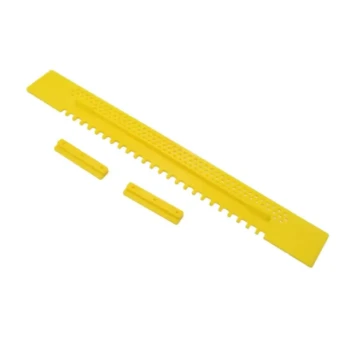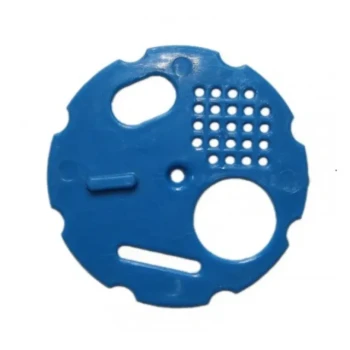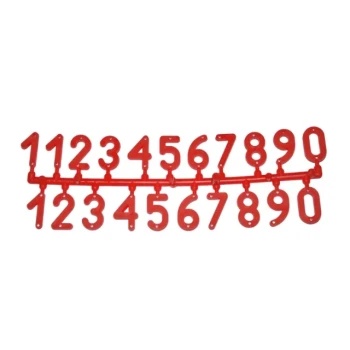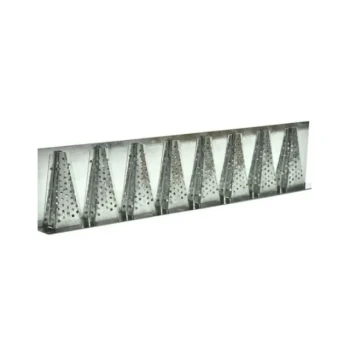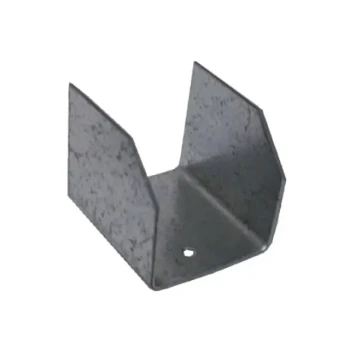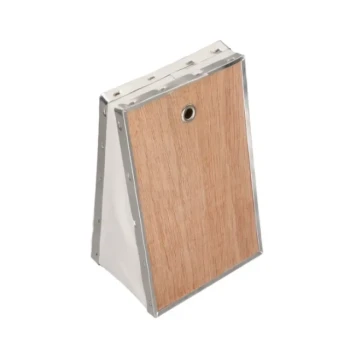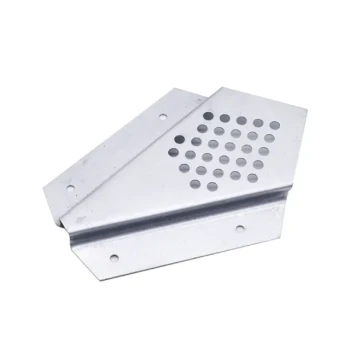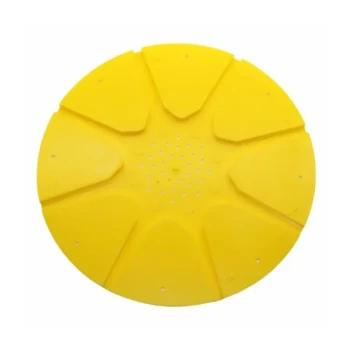There is no single correct size for a beehive entrance; the ideal dimensions change with the season, colony strength, and your management goals. However, a highly effective and defensible starting point for many colonies is an entrance that is 3/8 of an inch high and approximately 6 inches wide. This size provides a good balance between colony defense and adequate ventilation.
The core principle is that the hive entrance is not a static feature but a critical management tool. Adjusting its size allows you to help your bees balance the competing needs for defense against pests, thermoregulation of the brood nest, and efficient forager traffic.
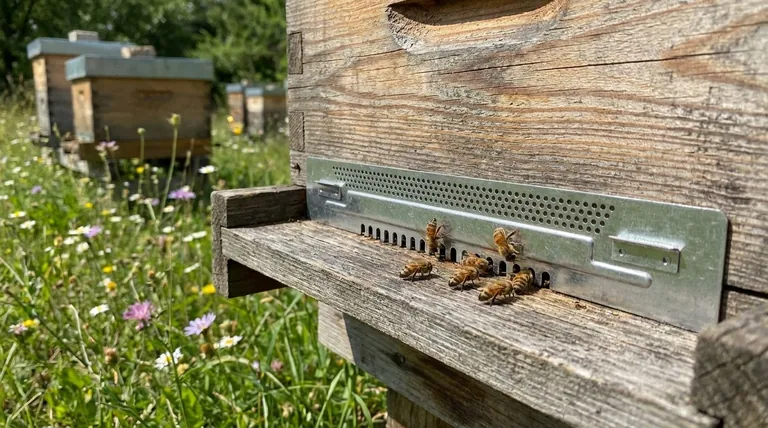
The Purpose of the Hive Entrance
The entrance is far more than just a doorway. It's a complex interface between the highly controlled internal environment of the colony and the unpredictable world outside.
Regulating Temperature and Humidity
The entrance is the primary airway for the hive. Bees work constantly to manage internal temperature and humidity, and a properly sized entrance makes this job significantly easier.
Defending the Colony
Every pest, predator, or robbing bee that threatens the colony must pass through this single chokepoint. The size of the entrance directly determines how defensible this critical point is.
Managing Forager Traffic
During a strong nectar flow, hundreds of bees per minute may be entering and exiting the hive. The entrance must be large enough to accommodate this traffic without creating a bottleneck.
Why a Smaller Entrance is Often Better
Modern beekeeping practices often default to a wide-open entrance, but research and experience show that a smaller, more constrained opening provides significant advantages for the colony.
Enhanced Defensibility
A smaller entrance reduces the area that guard bees must patrol. This makes it far easier to repel intruders like wasps, yellow jackets, and robbing bees from other colonies.
Reduced Guard Force
With a smaller, more defensible entrance, the colony can allocate fewer bees to guard duty. These bees are then free to perform other vital tasks, such as foraging for nectar and pollen.
Improved Pest Control
An entrance height of 3/8 of an inch (standard bee space) is physically too small for many larger pests, like certain beetles or mice, to enter the hive in the first place.
Understanding the Trade-offs
While a small entrance is often optimal, there are specific situations where it can become a liability. You must be prepared to adjust.
The Risk of Overheating
In very hot and humid climates, a small entrance may not provide enough ventilation. This can cause the colony to overheat and expend significant energy fanning to cool the hive down.
Creating Traffic Jams
During a peak honey flow, a small entrance can become a bottleneck. Foragers returning with nectar get stuck in a "traffic jam," reducing the overall efficiency and productivity of the colony.
Triggering "Bearding"
If you see a large number of bees clustering on the outside of the hive, a behavior known as "bearding," it can be a sign that the hive is overcrowded and poorly ventilated. Enlarging the entrance is often the first step to alleviate this.
Making the Right Choice for Your Goal
Use an entrance reducer or blocks of wood to adjust the entrance width throughout the year. The height should almost always remain at 3/8 of an inch.
- If your primary focus is protecting a new or weak colony: Use a very small entrance, about 1-2 inches wide, to give the small population the best chance to defend itself.
- If your primary focus is overwintering or fall defense: Use a small to medium entrance, around 4-6 inches wide, to protect against robbing and help the bees maintain heat.
- If your primary focus is maximizing honey production in a strong colony: Open the entrance to 12 inches or even the full width of the hive during the peak summer nectar flow to ensure maximum ventilation and forager traffic.
Actively managing your hive's entrance is one of the simplest and most effective ways to support a healthy and productive colony.
Summary Table:
| Goal | Recommended Entrance Width | Key Benefit |
|---|---|---|
| Protecting a New/Weak Colony | 1-2 inches | Maximizes defensibility for a small bee population. |
| Overwintering / Fall Defense | 4-6 inches | Balances robbing defense with heat retention. |
| Maximizing Honey Production | 12 inches (full width) | Prevents traffic jams and overheating during a strong nectar flow. |
Equip your apiary for success with HONESTBEE.
Managing your hive entrance is just one part of a successful operation. As a trusted wholesale supplier for commercial apiaries and beekeeping equipment distributors, HONESTBEE provides the durable, high-performance supplies you need to scale your productivity and protect your investment.
From precision entrance reducers to full hive systems, our equipment is designed to support the health of your colonies and the efficiency of your business.
Contact our wholesale team today to discuss your apiary's needs and discover how our products can contribute to your bottom line.
Visual Guide
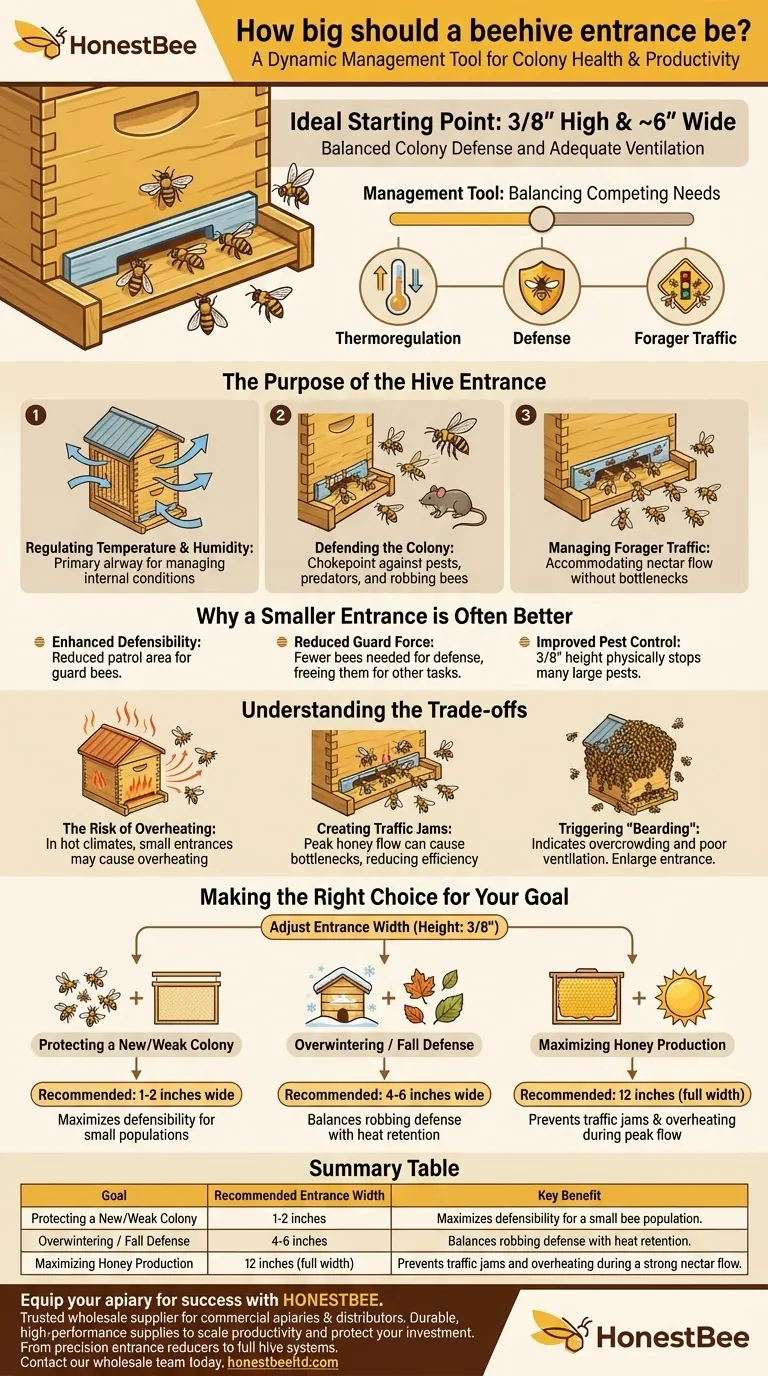
Related Products
- Beehive Entrance Reducer Guardian Metal Hive Entrance for Bees
- Multi-Functional Sliding Hive Entrance for Beekeeping
- Steel Round Disc Entrance Reducer for Flexzion Bee Hive Nuc Box Gate
- Professional Reversible Beehive Hive Entrance
- Multi-Functional Rotary Hive Entrance Disc for Beekeeping
People Also Ask
- What happens if you seal an entrance to a bee hive? Avoid a Costly Structural Disaster
- What are the different types of entrance reducers available? A Guide to Protecting Your Hive
- How can a Langstroth hive entrance be adjusted? Mimic Natural Bee Preferences for a Healthier Hive
- What are the different entrance sizes for an 8 or 10-frame Langstroth hive? A Guide to Seasonal Management
- What are the two functions of the Entrance Reducer? Master Hive Defense and Safe Transport



